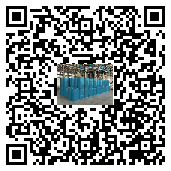Water-based unstable foam wetting agents have shown wide application value in multiple industrial fields due to their unique
low-foam characteristics and efficient wetting ability. The following is a detailed analysis of its core application scope and
specific scenarios:
I. Coatings and ink industries
Water-based coatings
Application scenarios: Suitable for plastics, metals, furniture, wood and decorative coatings, especially in roller coating, dip coating
and spraying processes.
Advantages:
Reducing surface tension to achieve efficient wetting and improve coating leveling.
The unstable foam characteristics avoid defects such as shrinkage and pinholes caused by traditional wetting agents due to foam
stabilization, and reduce the amount of defoaming agent.
Good acid and alkali resistance and temperature resistance, does not affect recoating and adhesion.
Water-based inks
Application scenarios: Enhance the wetting of substrates (such as paper and plastic films) during printing, reduce shrinkage, and
ensure printing quality.
Advantages: Rapidly reduce dynamic surface tension, adapt to high-speed printing needs, and avoid foam affecting ink transfer
efficiency.
II. Textile and Papermaking Industry
Textile Processing
Application scenarios: used for fabric pretreatment (such as desizing, bleaching), improving the permeability of dyes or auxiliaries,
especially optimizing processing efficiency under low foam requirements.
Advantages: In the dyeing and finishing process, the unstable foam characteristics reduce the interference of foam on equipment
operation and improve production continuity.
Papermaking process
Application scenarios: as a substrate wetting agent, improve the uniformity of paper coating; control foam in formulations such as
papermaking enzymes and matting agents.
Advantages: synergistically with papermaking chemicals (such as defoamers and thickeners) to ensure stable operation of paper
machines and improve the quality of finished products.
III. Pesticides and Cosmetics
Pesticide formulations
Application scenarios: when spraying on the leaves, by reducing the surface tension, the spreading of the liquid on the leaves
(especially the low surface energy wax layer) is enhanced to improve the efficacy.
Advantages: avoid uneven application of pesticides caused by foam, reduce pesticide waste, and meet environmental protection
requirements.
Cosmetics
Application scenarios: Provide wetting function in low-foaming formulas (such as cleansing products and skin care lotions) to
ensure the comfort and stability of the product during use.
Advantages: Compatible with a variety of surfactants, does not damage the formula system, and improves the skin wetting effect.
IV. UV curing system
Application scenarios: Suitable for UV-curing coatings, inks and adhesives, such as Goode LW-1440 and other products.
Advantages: In the rapid curing process, it takes into account both wetting and low-foaming properties to avoid defects in the
coating after
curing, and is suitable for scenarios with high gloss and high hardness requirements.
V. Other special fields
Difficult substrate wetting
Example: Low surface energy plastics (polypropylene, polyethylene) or oily metal surfaces, through wetting agents (such as 60644
model) to achieve non-shrinkage coating.
Scenario with environmental protection requirements
Example: Water-based systems require wetting agents due to high surface tension (72 mN/m), and the unstable foam characteristics
meet the requirements of environmentally friendly coatings for low VOC and low foam.
Composite process synergy
Example: When used with defoamers, the amount of defoamers can be reduced to avoid system instability caused by excessive
defoamers.
Summary
Water-based unstable foam wetting agents have become key additives in many industries due to their low foaming, efficient wetting
and broad-spectrum compatibility. Its core value lies in balancing wetting performance and foam control, which is especially
indispensable in high-speed coating, low surface energy substrate treatment and environmentally friendly formulations.
In the future, with the advancement of the water-based trend, its application range is expected to further expand to emerging fields
such as new energy and electronic materials.


